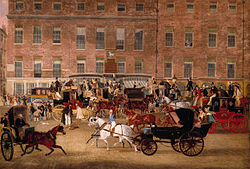
A hotel is an establishment that provides paid lodging on a short-term basis. Facilities provided inside a hotel room may range from a modest-quality mattress in a small room to large suites with bigger, higher-quality beds, a dresser, a refrigerator, and other kitchen facilities, upholstered chairs, a flat-screen television, and en-suite bathrooms. Small, lower-priced hotels may offer only the most basic guest services and facilities. Larger, higher-priced hotels may provide additional guest facilities such as a swimming pool, a business center with computers, printers, and other office equipment, childcare, conference and event facilities, tennis or basketball courts, gymnasium, restaurants, day spa, and social function services. Hotel rooms are usually numbered to allow guests to identify their room. Some boutique, high-end hotels have custom decorated rooms. Some hotels offer meals as part of a room and board arrangement. In Japan, capsule hotels provide a tiny room suitable only for sleeping and shared bathroom facilities.
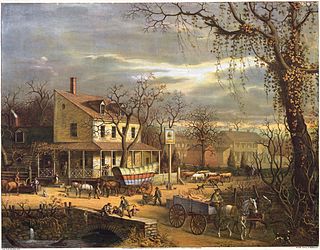
Inns are generally establishments or buildings where travelers can seek lodging, and usually, food and drink. Inns are typically located in the country or along a highway. Before the advent of motorized transportation, they also provided accommodation for horses.

A pub is a drinking establishment licensed to serve alcoholic drinks for consumption on the premises. The term first appeared in the late 17th century, to differentiate private houses from those open to the public as alehouses, taverns and inns. Today, there is no strict definition, but CAMRA states a pub has four characteristics:
- is open to the public without membership or residency
- serves draught beer or cider without requiring food be consumed
- has at least one indoor area not laid out for meals
- allows drinks to be bought at a bar
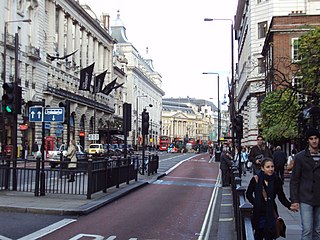
Piccadilly is a road in the City of Westminster, London, England, to the south of Mayfair, between Hyde Park Corner in the west and Piccadilly Circus in the east. It is part of the A4 road that connects central London to Hammersmith, Earl's Court, Heathrow Airport and the M4 motorway westward. St James's is to the south of the eastern section, while the western section is built up only on the northern side. Piccadilly is just under 1 mile (1.6 km) in length, and it is one of the widest and straightest streets in central London.

The Angel, Islington, is a historic landmark and a series of buildings that have stood on the corner of Islington High Street and Pentonville Road in Islington, London, England. The land originally belonged to the Clerkenwell Priory and has had various properties built on it since the 16th century. An inn on the site was called the "Angel Inn" by 1614, and the crossing became generally known as "the Angel". The site was bisected by the New Road, which opened in 1756, and properties on the site have been rebuilt several times up to the 20th century. The corner site gave its name to Angel tube station, opened in 1901, and the surrounding Angel area of London.
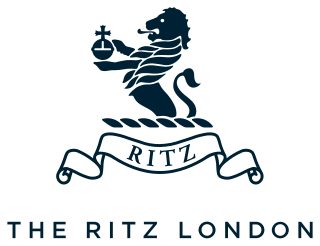
The Ritz London is a 5-star luxury hotel at 150 Piccadilly in London, England. A symbol of high society and luxury, the hotel is one of the world's most prestigious and best known. The Ritz has become so associated with luxury and elegance that the word "ritzy" has entered the English language to denote something that is ostentatiously stylish, fancy, or fashionable.

The coaching inn was a vital part of Europe's inland transport infrastructure until the development of the railway, providing a resting point (layover) for people and horses. The inn served the needs of travellers, for food, drink, and rest. The attached stables, staffed by hostlers, cared for the horses, including changing a tired team for a fresh one. Coaching inns were used by private travellers in their coaches, the public riding stagecoaches between one town and another, and the mail coach. Just as with roadhouses in other countries, although many survive, and some still offer overnight accommodation, in general coaching inns have lost their original function and now operate as ordinary pubs.

Buildings, sites, districts, and objects in Virginia listed on the National Register of Historic Places:

Cambridge House is a Grade I listed former townhouse in central London, England. It sits on the northern side of Piccadilly at number 94, in the fashionable district of Mayfair. As of 2021, the property is being converted into a luxury hotel and seven residences.

Dover Street is a street in Mayfair, London. The street is notable for its Georgian architecture as well as the location of historic London clubs and hotels, which have been frequented by world leaders and historic figures in the arts. It also hosts a number of contemporary art galleries. An equestrian sculpture by Elisabeth Frink stands on the junction of Dover Street and Piccadilly, opposite the Ritz Hotel.

The Ritz-Carlton Hotel Company, LLC is an American multinational company that operates the luxury hotel chain known as The Ritz-Carlton. The company has 108 luxury hotels and resorts in 30 countries and territories with 29,158 rooms, in addition to 46 hotels with 8,755 rooms planned for the future.
Acton Green is a residential neighbourhood in Chiswick and the London Borough of Ealing, in West London, England. It is named for the nearby Acton Green common. It was once home to many small laundries and was accordingly known as "Soapsuds Island".

The Falcon is a Grade II listed public house at 2 St John's Hill, Battersea, London.
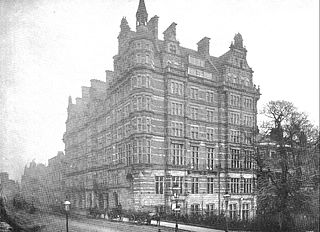
The Walsingham House or Walsingham House Hotel was located at 150-4 Piccadilly on the site of what is now The Ritz Hotel, London and was adjacent to the Bath Hotel. The Ritz's financial backers began negotiations in 1901 and purchased the Walsingham simultaneously with the Bath Hotel. Though the Walsingham was of fairly new construction, they determined it was too "inelegant" and demolished the building. One of the considerations that made the transaction appealing to the city was that they would be able to widen Piccadilly when the Walsingham and Bath Hotels were demolished.
The Bath Hotel was located at 155 Piccadilly on the site of what is now The Ritz Hotel, London and was adjacent to the Walsingham House. The Ritz' financial backers began negotiations in 1901 and purchased the Bath in 1902 simultaneously with the acquisition of the Walsingham. One of the considerations that made the transaction appealing to the city was that they would be able to widen Piccadilly when the Walsingham and Bath Hotels were demolished.

Angel Street, formerly known as Angel Alley, Angel Court, and Angell Street, is a street in the City of London that runs between King Edward Street in the west and St Martin's Le Grand in the east. Although dating back to at least 1542, no original buildings now remain due to the effects of the Great Fire of London, the London Blitz, and redevelopment.
White Horse Inn is a heritage-listed former residence, inn, bank and restaurant at Market Street, Berrima, Wingecarribee Shire, New South Wales, Australia. It was built from 1834 to 1850 by Edward Davies. It is also known as Commercial Bank of Australia, Rosebank, Oldbury's Inn, Holsberry Inn, Mail Coach Inn, and Royal Mail Coach Inn. It was added to the New South Wales State Heritage Register on 2 April 1999.
